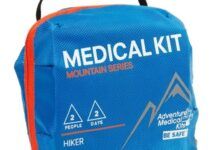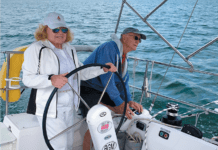In his book, Nigel Calders Cruising Handbook, Calder takes a detailed look at both the necessary and desirable features of an offshore cruising boat. Heres some of his advice:
Dodgers and Biminis
A dodger (spray hood) has to be high on the priority list of any cruising sailor, with a cockpit bimini not far behind. Together, they make a tremendous contribution to onboard comfort, particularly when watch-keeping in foul weather or sailing under a tropical sun. To get the most out of them, they have to be carefully thought out, including the following features:
- standing headroom in the cockpit
- easy entry and exit from the cockpit, including strategically placed grab bars (rarely fitted), and perhaps zippered over-head sections between the dodger and bimini to open up the point of entry/exit
- sufficient strength to withstand people swinging on and lurching into the support structures, and to stand up to gale-force winds and the impact of wave crests coming aboard
- the framework, when erected or folded down, to be located so that it does not interfere with the working of the boat (e.g. operating rope clutches on the cabin top and cranking winches) and to have some means of tying it down in the face of boarding waves
- a dodger coaming (to which the dodger attaches) that stops water surging across the deck before it gets under the dodger
- both the dodger and the bimini to be designed and cambered so that rain water is shed outside the cockpit, not inside it
- both the dodger and the bimini to be stretched tight enough and to have sufficient camber to prevent pockets of water forming (as the fabric ages, water drips through if puddles form)
- side curtains to the dodger that fully protect a watch-keeper when beating to windward
- zippered windows in the dodger for visibility and ventilation, with snap-on covers for all windows to protect the plastic from premature aging when the boat is not in use
- windows in the bimini, where needed, to check the set of sails (the windows with zippered or Velcro covers to prevent the cockpit turning into a greenhouse when in harbor)
- the dodger and bimini covers to be attached to their frames in such a way that they can be removed without disassembling any of the framework
- covers for any zippers make them more or less waterproof, and installed so that water does not drive under them and come through the zippers (basically, the covers should be attached on the forward edges of the zippers and open on their aft edges)
- leather chafe patches to be added wherever a dodger and bimini rub on something else, or wherever they are likely to be grabbed by people.
For more detailed advice on what to look for in and on a boat for your cruising, purchase Nigel Calders Cruising Handbook from Practical Sailor.







































